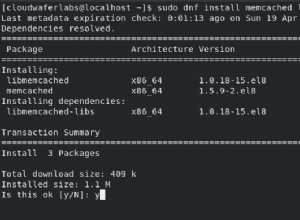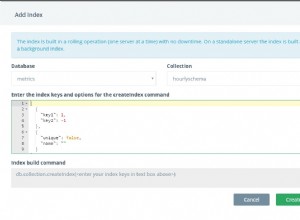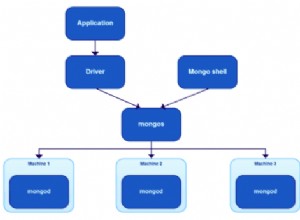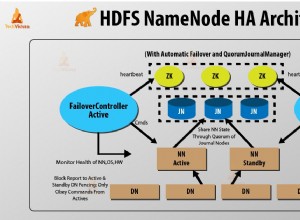Hai 3 opzioni:
- Utilizza il metodo del driver integrato (ad es.
ForEachAsync,ToListAsync). - Su C# 8.0 e versioni successive puoi convertire
IAsyncCursorin unIAsyncEnumerablee usaawait foreacho qualsiasi operatore LINQ asincrono. - Esegui l'iterazione su
IAsyncCursor.
Metodi driver integrati
Il driver ha alcuni metodi di estensione simili a LINQ per IAsyncCursor , come AnyAsync , ToListAsync , ecc. Per l'iterazione ha ForEachAsync :
var cursor = await client.ListDatabasesAsync();
await cursor.ForEachAsync(db => Console.WriteLine(db["name"]));
Conversione in IAsyncEnumerable
In C# 8.0 e versioni successive è necessario eseguire l'iterazione con await foreach (e usa LINQ asincrono). Ciò richiede il wrapping di IAsyncCursor in un IAsyncEnumerable .Puoi farlo da solo, ma poiché è importante correggere alcune cose critiche (come la cancellazione e lo smaltimento) ho pubblicato un pacchetto nuget:MongoAsyncEnumerableAdapter
var cursor = await client.ListDatabasesAsync();
await foreach (var db in cursor.ToAsyncEnumerable())
{
Console.WriteLine(db["name"]);
}
Iterazione personalizzata
L'iterazione tradizionale in C# viene eseguita con IEnumerable e foreach . foreach è lo zucchero sintattico del compilatore. In realtà è una chiamata a GetEnumerator , un using scope e un while ciclo:
using (var enumerator = enumerable.GetEnumerator())
{
while (enumerator.MoveNext())
{
var current = enumerator.Current;
// use current.
}
}
IAsyncCursor è equivalente a IEnumerator (il risultato di IEnumerable.GetEnumerator ) mentre IAsyncCursorSource è IEnumerable . La differenza è che supportano async (e ottieni un batch ogni iterazione e non solo un singolo elemento). Quindi puoi implementare l'intero using , while fai il loop da solo:
IAsyncCursorSource<int> cursorSource = null;
using (var asyncCursor = await cursorSource.ToCursorAsync())
{
while (await asyncCursor.MoveNextAsync())
{
foreach (var current in asyncCursor.Current)
{
// use current
}
}
}




